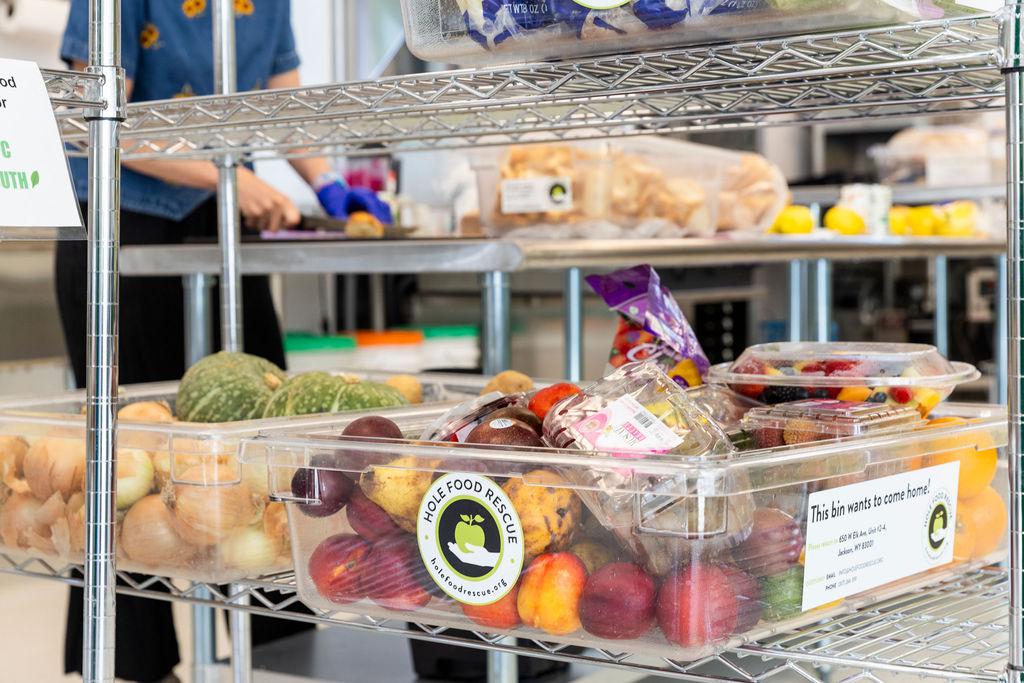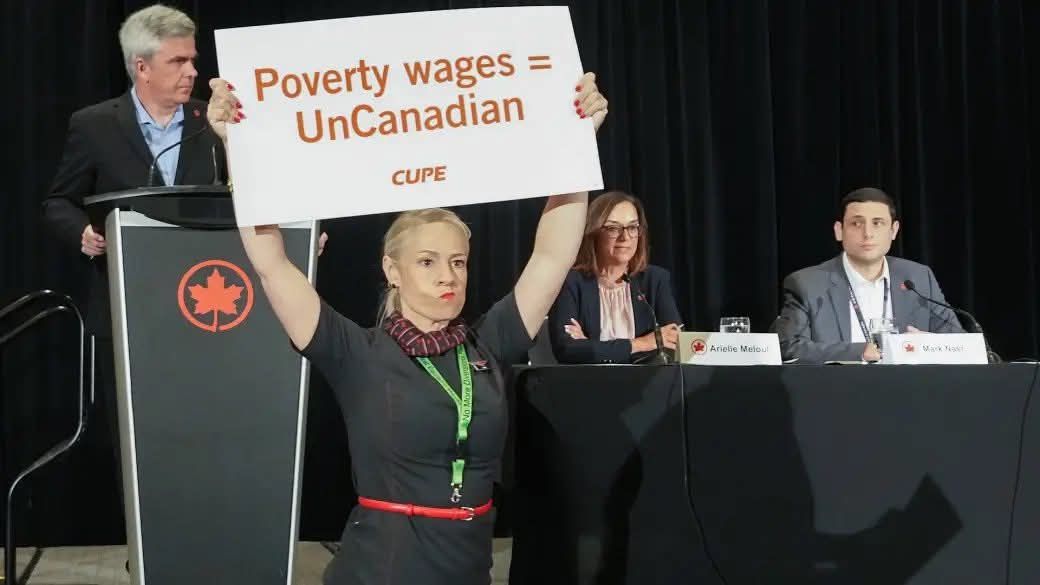By Whitney Curry Wimbish
Copyright prospect

Workers at food banks across the country are reporting disturbing trends that illustrate yet another way President Trump’s policies are hurting regular people. The type of pain he’s inflicting this time is hunger, and he’s doing it by making food too expensive to buy, slashing food aid, and frightening the most vulnerable away from the organizations that can help.
“There’s a real chill for many families who might think we’re the government or will share information,” said Bellingham Food Bank Executive Director Mike Cohen, who runs the busiest food bank in Washington state. He said the organization knows multiple families who have stopped coming in because they are afraid of immigration agents showing up.
September is Hunger Action Month, the national campaign that advocacy group and food bank network Feeding America has run since 2007 to stop hunger, and the group’s outlook is bleak. Findings in this year’s assessment of people who are experiencing or experienced food insecurity are the worst in a decade. More than half of the 1,500 people surveyed nationwide said they ran out of food within the last year; nearly a third said that was the case in the last month. More than two-thirds reported they are just getting by, not as healthy as they’d like, “and dealing with lots of stress and anxiety.”
Nearly two-thirds of survey participants said the high price of food was the main culprit of food insecurity in the country; more than half blamed high inflation in general. Half also said they had delayed paying rent, utility bills, and medical expenses just so they could afford to buy food.
Economists, lawmakers, activists, and food bank organizations have said for weeks that Trump’s policies will make that much worse. Economists told Fortune magazine that grocery prices could increase by as much as 100 percent this winter because of Trump’s tariffs and adviser Stephen Miller’s obsession with deporting the agricultural labor workforce. As of 2022, an estimated 45 percent of farmworkers were undocumented, and from March to July this year the agricultural workforce shrank by 155,000 people, or about 7 percent. Thanks to the GOP’s decimation of the Supplemental Nutrition Assistance Program, or SNAP, fewer people will be able to pay for food at all.
Miller’s deportation machine is not just taking away farmworkers, it’s also scaring hungry people away from places that can help. Food bank workers in a range of states told the Prospect that while they were seeing an overall increase in use, they were seeing fewer immigrants, especially Latinos and refugees, who they said were afraid to give their personal information, which some food banks require.
And even when a food bank doesn’t require information, immigrants are afraid to show up in case Immigration and Customs Enforcement agents swoop in, they said. A few who would only talk on condition of anonymity said organizations are conducting outreach to continue serving families that are afraid to come in person. But they declined to share details for fear that doing so would make them a target. In other cases, food assistance organizations said they had a decentralized distribution model to better protect people in need and those providing help, while also protecting themselves.
THE UPSHOT, FOOD ACTIVISTS SAID, is that Trump’s policies are forcing people to go hungry across America, even in well-off parts of the country. Wyoming’s Teton County, for example, has the nation’s highest per capita income at nearly half a million dollars in 2023, according to the most recent federal data. Yet at Hole Food Rescue in the county’s city of Jackson, workers are noticing more new visitors. Local officials conducted a Community Health Needs Assessment that found 9.5 percent of community members were food insecure in 2021. But a more accurate assessment is the one conducted by the nonprofit United Way, which determines how many people are ALICE—“asset limited, income constrained, employed.” ALICE residents in Jackson are nearly a third of the population, said Hole Food Rescue Program Director Iván Jiménez.
Despite the area’s affluent reputation, Jiménez said, “poverty and hardship still exist here, they just travel in different ways.” He added that the appearance of stability can be deceiving, and that those enduring hunger might not be obvious, such as public school teachers. “The affordability crisis is very, very real in these communities, and the ability for working-class people to live in the communities they make run is becoming more impossible by the day.”
The story is similar in Whatcom County, Washington, where half of residents are at or below ALICE, Cohen said. It’s a desirable place to live, he added, but only a small percentage of jobs in the area pay enough. The income disparity is easy to see based on who comes in, he said. Visitors include teacher’s aides, nurses, and clerks in the city government, but not school principals and superintendents, doctors, or the mayor.
The same is true in Boulder, said Sean Kohler, development manager at Boulder Food Rescue. Like others, he’s worried about how the cuts to federal programs will worsen food insecurity, and he’s also concerned about Colorado Gov. Jared Polis’s decision to remove “sugary beverages” from SNAP-eligible drinks, which Kohler called “extremely concerning” because it signals that people without much money don’t know how to take care of themselves. “The core of that idea,” he said, “is racism, classism, and prejudice.”
ONE GROUP OF PEOPLE that is not going hungry is grocery store executives. In recent earnings calls, they discussed how increased prices are nothing but good news for them. Sales are up and forecasts are even better than they were a few months ago.
Late last week, for example, grocery corporation Kroger held its second-quarter earnings call, during which it raised its annual core sales forecast again, the second time in a row. Now executives are expecting the company’s full year of sales to increase between 2.7 percent and 3.4 percent. That’s up from its earlier forecast of 2.25 percent to 3.25 percent. Kroger competitors Dollar General and Walmart earlier in the season adjusted their outlook upward, too, with the latter specifically pointing to “strong growth in grocery.”
“Low- and middle-income households are really looking for deals,” said Kroger’s interim CEO Ron Sargent, including using coupons more often and “making smaller but more frequent trips.”
David Kennerley, Kroger’s executive vice president and chief financial officer, seemed to give a nod to the resentment Americans have toward this state of affairs, remarking that “whilst we have not yet seen what I would call sort of consumer sentiment translate necessarily into action, that remains an area that we continue to watch very, very carefully.”
As for higher-income households, Sargent said, “they’re still spending.”



